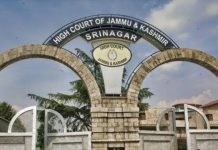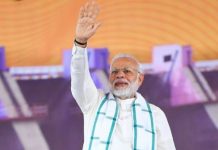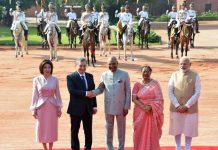 Even as the Supreme Court cleared the Central Vista project, the controversy surrounding it refuses to die down. Questions are being asked about the need and fingers pointed at the intent. Both seem suspect. At least that is how the critics would prefer to see it.
Even as the Supreme Court cleared the Central Vista project, the controversy surrounding it refuses to die down. Questions are being asked about the need and fingers pointed at the intent. Both seem suspect. At least that is how the critics would prefer to see it.
As the New Year set in, the apex court gave the go-ahead to the project in a split verdict. Two judges, Justice Khanwilkar and Justice Maheshwari, gave a majority judgement while one judge, Justice Khanna, dissented.
A bunch of petitions had challenged demolishing the existing structures and building a new Parliament in the national capital.
The project aims to renovate and redevelop 86 acres of land in Lutyens’s Delhi which is characterized by the iconic Parliament House, Rashtrapati Bhavan, India Gate, North and South Block, among others. At a conservative estimate, the cost of the project is a whopping rupees 971 crores, which is for the Parliament building alone. The entire project will cost much more: some 20,000 crore as of now.
Questions are being raised at the need for spending so much money, particularly when the nation is reeling under the effects of the pandemic. Economic growth is at an all-time low and recovery seems far-fetched. Hence deferring the project could be an option even though there are takers for shelving it for good. In an open letter to Prime Minister Modi, a bunch of retired IAS and IPS officers compared the project to “Nero fiddling while Rome burned”.
Deferment is not an option because the Government has a deadline to meet. The Government intends to have the new Parliament ready before India’s 75thIndependence Day which falls next year. So in one sense, time is running out.
On the costs, the Government’s defence is that it would save 1,000 crores on rent that it shells out annually. In its view, the existing structure is practically falling apart, lacks safety features and is inadequate in terms of space.
Legally, the technicalities were under question: change in land use, irregularities in the tendering process, environmental clearances and violations in procedures. But governments being governments, they are adept at plugging loopholes. So also with the current dispensation.
Expectedly, the Court held that there were no infirmities in the approvals granted. On the change of land use, the Court said that the government is well within its rights to do so: “lawful exercise of its power” to use the exact terminology.
Legalities and their correctness apart, the issue here is the public distress that the project has created. There is distrust about the designs of the Government and a great deal of dismay at attempts to erase the legacy and with that, a nearly 100-year old History.
Spearheaded by architects Edwin Lutyens and Herbert Baker, New Delhi was built following the decision of the British to shift the Government of India’s headquarters from Calcutta to Delhi.
Announced at his coronation in 1911 by Britain King George the fifth, the 20 year-long project was unveiled in 1931, the mainstay being the majestic Rashtrapati Bhawan, Parliament House, North and South Blocks, Rajpath and India Gate among others.
Rajpath was originally Kingsway, the name-bearing similarity to the one in London; Janpath was Queensway, and Rashtrapati Bhawan the Viceroy’s House. The Indian-ness of the nomenclature is a post-Independence feature.
 Under the Narendra Modi government, History is set to change, following the Courts upholding its right. This go-ahead, hailed in some quarters as the Government’s victory, is, in reality, a defeat of the people: a breach of faith between the governing and the governed; the rulers and the ruled and citizens and the government, to put it simply.
Under the Narendra Modi government, History is set to change, following the Courts upholding its right. This go-ahead, hailed in some quarters as the Government’s victory, is, in reality, a defeat of the people: a breach of faith between the governing and the governed; the rulers and the ruled and citizens and the government, to put it simply.
It is in this context that the dissenting judgement is telling. In the 2:1 ratio, the majority of two has prevailed but it is the one that stands out, permeating the majority. Even while the two stand strong, the one is about emotion and thought rather than argument and logic.
Therefore, it is against this backdrop that Justice Khanna’s dissent needs to be re-read and evaluated. His observations touch a chord particularly his comment that the change in land use lacked the consultation process or adequate disclosures: “Mere uploading of the gazette notification giving the present and the proposed land use with plot numbers was not sufficient compliance, but rather an exercise violating the express as well as implied stipulations, that is, necessity and requirement to make adequate and intelligible disclosure” he ruled. Stating that the Central government did not give adequate thought to the concerns of the public, he observed that the permissions given by the Central Vista Committee appeared to be pre-determined. The reading of the minutes does not show a fair and independent application of mind, Justice Khanna noted.
The dissenting judgement has made an important point about the citizens right to know the “intelligible details” of the mammoth project given the “permanent consequences” involved: “The proposed changes, unlike policy decisions, would be largely irreversible. Physical construction or demolition once done, cannot be undone or corrected for future by repeal, amendment or modification as in case of most policies or even enactments.” Justice Khanna ruled.
The Government may have kept to the rule book and dotted the i’s and crossed the t’s but it has failed to garner public confidence. As is common with the BJP, the trust deficit exists in large measure and filling this gap is an uphill task. Therefore even if the Government has the advantage of flagging the apex Court judgement to its advantage, the goodwill that it has lost is unmeasurable.
Modi loyalists have dubbed the redevelopment project as “Prime Minister’s dream project”. The Opposition, led by the Congress, has called it “somebody’s hobby horse”. Both are accurate.
That the Central Vista is Modi’s dream project is a given. For one, his laying the foundation stone is proof enough that he wants his name etched in the new complex. Given that this complex will be functional and the other redundant, it is Modi who will be remembered by the current and successive generations.
It is perhaps for this reason that Modi chose to lay the first stone rather than let the President of India do it. Being a Constitutional Head it would be appropriate if the President and not the Prime Minister did the honours. Those who see Modi as a megalomaniac assert that Modi would never let the focus shift from him, especially on the issue of legacy.
The open letter made this point by stating that the purpose of redevelopment seems to be “to leave the stamp of a particular government in Delhi”. They were not off the mark. The entire exercise is aimed at institutionalizing Modi’s tenure by leaving footprints that Time cannot erase.
But Modi is not alone in this. Others before him have muddied the waters. Indira Gandhi, then Prime Minister, inaugurated the Parliament annexe while her son and successor, Rajiv, laid the foundation stone of the Parliament library. Of course both were supporting structures to the main edifice and hence did not generate much controversy.
Modi may have taken the lead in pushing the idea of a new Parliament but he is not alone in this. In her capacity as Lok Sabha Speaker, Meira Kumar, a Congress leader, had approved the idea of a new Parliament. The building, Kumar had then said, was “weeping” from overuse and structural deterioration.
However, being a doer, Modi does not need a fall-back. He is kind of a solo player. His definition of a team is not being in it together but all others following him. Therefore if he has decided to do something he will ensure that it happens, irrespective of misgivings. The Central Vista project is one such.
Modi’s vision is not limited to political power. That may be an important aspect, but not the only one. The bigger plan is to invade Memory and capture History. It is to free it from the shackles of Nehru and Gandhis and leave a stamp of his own on the psyche of the Indian people. It is to ensure that he and he alone occupies mind space and emerges as a leader whom the future generation of Indians will remember positively. Institutions come handy because it is through these that names remain etched in public memory.
This perhaps was the driving force behind erecting the world’s tallest statue: Sardar Vallabhbhai Patel’s in Modi’s home state of Gujarat. Modi inaugurated it within four years of being Prime Minister. Or the stone laying ceremony to begin the construction of the Ayodhya temple. While laying the 40-kilogram silver brick to mark the construction temple Modi made it a point to say that he was “grateful to witness history being made”. Even so, he made no effort to include patriarch L.K.Advani, the architect of the Ayodhya movement, lest the focus shifts. Advani watched the ceremony on television at his New Delhi home.
If with the statue of Unity, Modi intends to create History, with Ayodhya and Central Vista he wants to alter it. He wants the nation to have a selective memory: in which he and he alone reigns. He wants to erase a past which throws up names other than his.
In his speech during the foundation laying ceremony of the new Parliament, Modi hailed it as a step towards the creation of an “Aatamnirbhar Bharat” or self-reliant India. He made it a point to distinguish between the old and the new: the old that fulfilled necessities while the new that would realise the ambitions of 21st century India, to quote him. In a single stroke, he relegated the existing structure as a relic while flagging the new, of which he is the architect.
This perhaps is the logic of converting the existing Parliament into a museum, vehemently denied by Union Minister Hardeep Singh Puri, rather than following the co-existence principle where the old and new are both in use.
Co-existence necessitates sharing the glory. This is something the current dispensation is not prepared to do. It would rather bury the past and convert it into a relic instead of keeping it alive to haunt and overshadow the present. This is also its way of telling the country and its people that the old order has passed giving place to the new.
letters@tehelka.com













